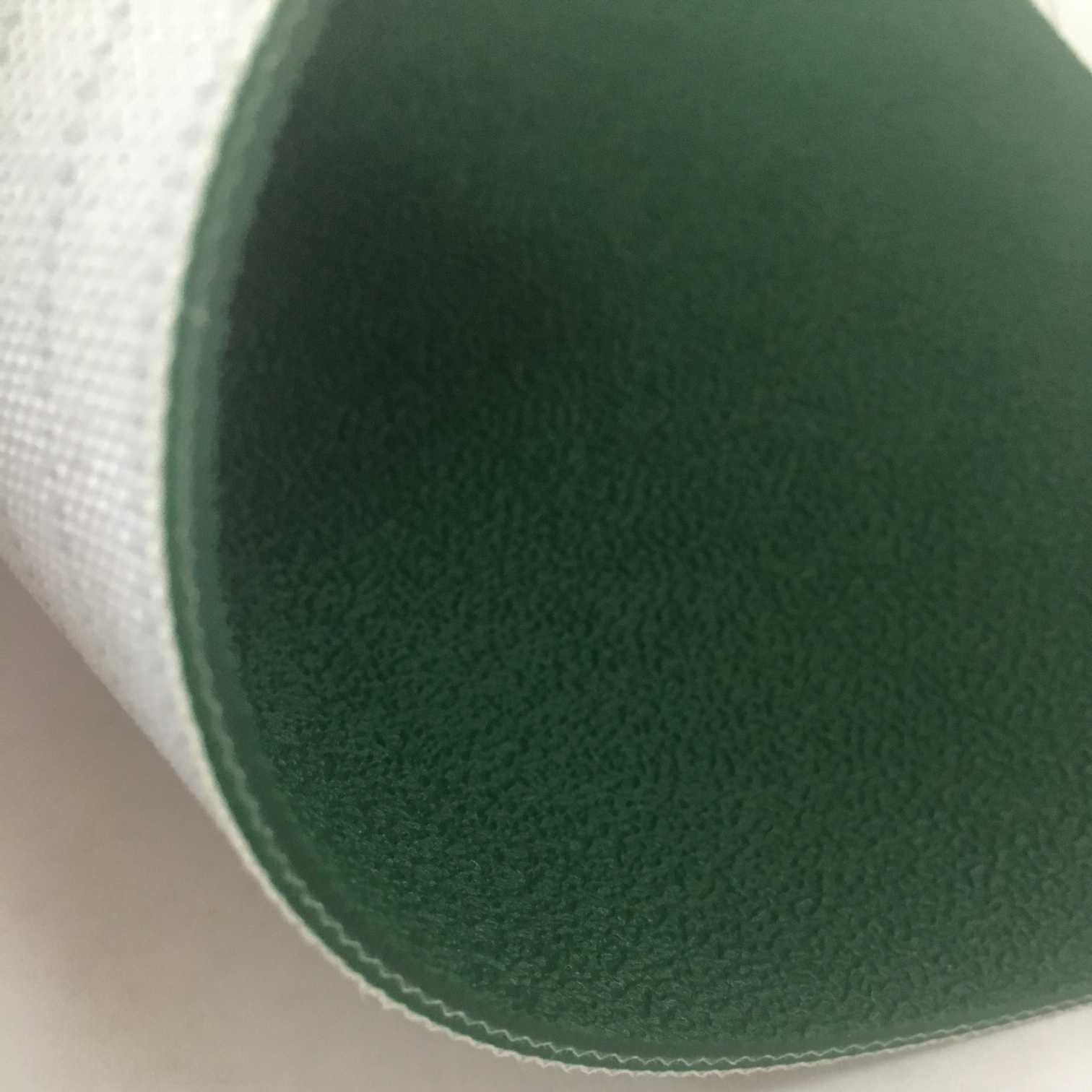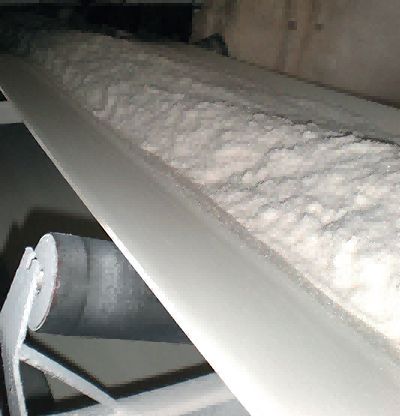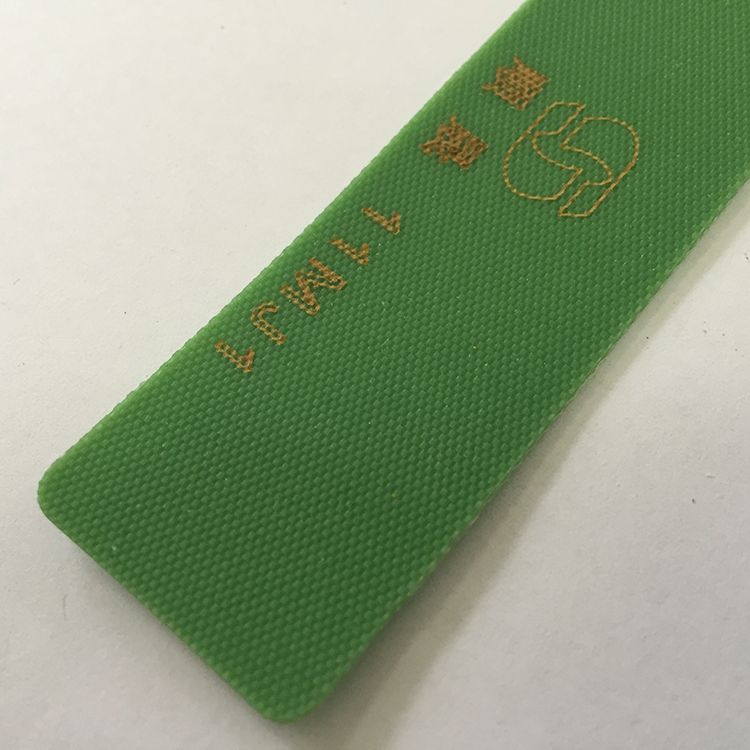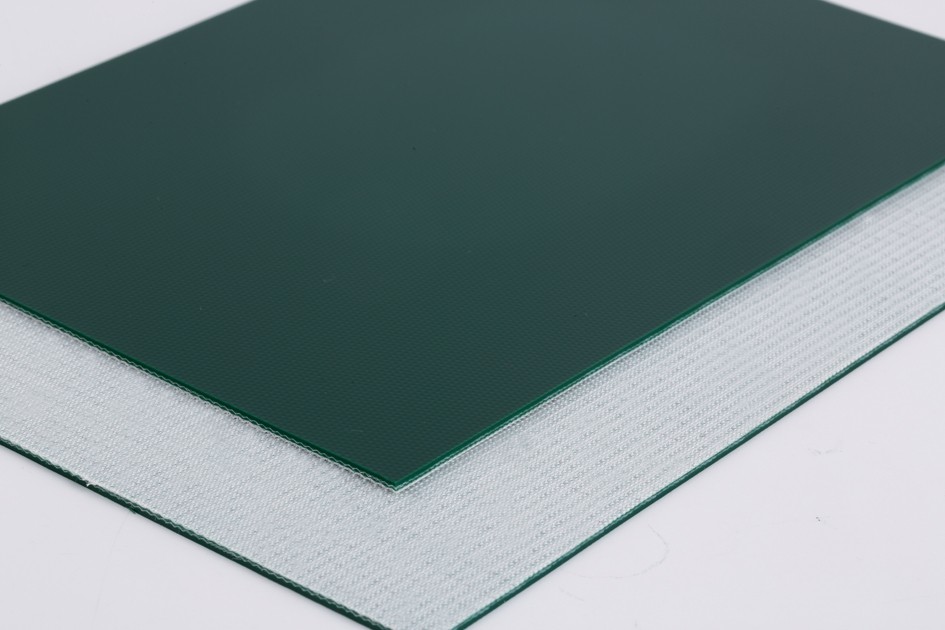Introduction
Polyvinyl Chloride, commonly known as PVC, has emerged as a favored material in the manufacturing of conveyor belts across various industries. Its unique properties make it an exceptional choice for these applications, providing numerous advantages over alternative materials.

Properties of PVC Relevant to Conveyor Belt Manufacturing
Polyvinyl Chloride (PVC) possesses several intrinsic properties that make it an exceptional choice for conveyor belt manufacturing, ensuring optimal performance and durability in various industrial applications.
- Flexibility and Durability
PVC’s remarkable flexibility is one of its standout properties. This flexibility allows for easy maneuverability over pulleys and rollers without compromising the belt’s structural integrity. It retains its shape even under stress, ensuring smooth and continuous operation along the conveyor system. This inherent flexibility not only reduces the risk of fatigue-related failures but also minimizes the chances of cracking or fracturing, even in demanding working environments.
- Chemical Resistance
One of PVC’s most advantageous qualities for conveyor belts is its exceptional resistance to chemicals, oils, and various solvents. PVC’s chemical resistance prevents deterioration or degradation when exposed to a wide array of substances commonly encountered in industrial operations. This resistance ensures the belt’s longevity and reliability, reducing the need for frequent replacements and maintenance, especially in industries where exposure to chemicals is prevalent.
- Abrasion Resistance
PVC’s resistance to abrasion is crucial for conveyor belt durability. The material exhibits excellent wear resistance, maintaining its structural integrity and surface quality even after prolonged use. This property minimizes the risk of surface damage or wear, ensuring the conveyor belt’s extended service life, reduced downtime, and maintenance costs.
- Cost-effectiveness
Beyond its physical properties, PVC’s cost-effectiveness stands out in conveyor belt manufacturing. PVC offers an economically viable solution without compromising quality and performance. Its relatively lower production costs compared to alternative materials, coupled with its longevity and reduced maintenance requirements, contribute significantly to cost savings over the conveyor belt’s lifecycle.
- Surface Properties
PVC’s surface characteristics are well-suited for conveyor belt applications. Its smooth surface reduces friction and minimizes the risk of material buildup, facilitating efficient material handling and reducing the potential for contamination during transportation.
- Customizability
Another advantage of PVC is its versatility in manufacturing. It can be easily customized to meet specific industry requirements, allowing for variations in thickness, surface textures, colors, and patterns tailored to different applications, from food processing to heavy-duty industrial operations.
Advantages of PVC in Conveyor Belt Manufacturing
Excellent Tensile Strength: PVC’s inherent strength provides conveyor belts with exceptional load-bearing capabilities and minimizes elongation, ensuring longevity and reliability even in heavy-duty operations.
Versatility Across Industries: PVC conveyor belts find applications across diverse industries, from food processing and packaging to mining and logistics, owing to their adaptability to various environments and operational requirements.
Low Maintenance Requirements: PVC’s smooth surface and easy-to-clean nature reduce downtime and maintenance costs, offering an efficient and hassle-free conveyor belt solution.
Comparing PVC with Alternative Materials for Conveyor Belts
PVC vs. Rubber Belts: PVC excels in durability, cost-effectiveness, and chemical resistance compared to rubber, offering longer service life and enhanced cost savings.
PVC vs. Metal or Fabric Belts: PVC’s flexibility and reduced weight contribute to better efficiency and adaptability, particularly in applications requiring flexibility.
PVC vs. Other Plastic Materials: PVC stands out due to its unique combination of properties, contrasting with materials like polyurethane or polyester, providing distinct advantages in certain applications.
Environmental Considerations and Sustainability Aspects
While PVC offers various advantages in conveyor belt manufacturing, there have been concerns regarding its environmental impact and sustainability. Addressing these concerns and exploring the steps taken towards sustainability is essential.
- Recyclability and Circular Economy
PVC is recyclable, contributing positively to the circular economy. Efforts have been made to promote recycling initiatives, diverting used PVC materials from landfills and incineration. Recycled PVC can be utilized in various applications, including new conveyor belt manufacturing, reducing the demand for virgin materials and minimizing environmental impact.
- Life Cycle Assessment (LCA)
Conducting life cycle assessments helps gauge the overall environmental impact of PVC conveyor belts. Assessments consider the environmental footprint throughout the belt’s life cycle, from raw material extraction to disposal. LCA studies provide valuable insights for manufacturers to optimize production processes, reduce energy consumption, and minimize environmental impacts.
- Environmental Impact Compared to Alternatives
Comparative assessments of PVC against alternative materials reveal insights into its environmental impact. Studies often show that PVC’s environmental footprint, including energy use and greenhouse gas emissions, can be competitive or even lower than certain alternative materials when considering the entire life cycle of conveyor belts.
- Sustainable Practices and Innovations
The industry is continually striving for sustainable practices and innovations to enhance PVC’s sustainability profile. Manufacturers are investing in eco-friendly production techniques, using additives and processes that reduce emissions and enhance material recyclability. Innovations in PVC formulations aim to improve environmental performance while maintaining the material’s beneficial properties for conveyor belt manufacturing.
- Regulations and Certifications
Stringent regulations and certifications guide responsible PVC manufacturing practices. Compliance with standards, such as ISO 14001 (Environmental Management Systems) and adherence to REACH (Registration, Evaluation, Authorization, and Restriction of Chemicals) regulations, ensures that PVC production minimizes environmental impact and addresses concerns regarding harmful substances.
- Stakeholder Engagement and Awareness
Stakeholder engagement and awareness initiatives foster collaboration among industry players, regulators, and consumers. Encouraging responsible PVC usage, promoting recycling programs, and raising awareness about the environmental benefits of PVC conveyor belts are integral to enhancing sustainability across the supply chain.
Industrial Applications and Case Studies
PVC conveyor belts have demonstrated exceptional performance across various industries. Case studies in food processing, mining, and logistics highlight PVC’s reliability, durability, and cost-effectiveness in meeting specific industry needs and challenges.
Conclusion
Polyvinyl Chloride (PVC) has solidified its position as a superior material for conveyor belt manufacturing. Its exceptional properties, including flexibility, durability, chemical resistance, and cost-effectiveness, elevate it above other materials in this application. Understanding these advantages is crucial for industries seeking reliable, efficient, and cost-effective conveyor belt solutions.





